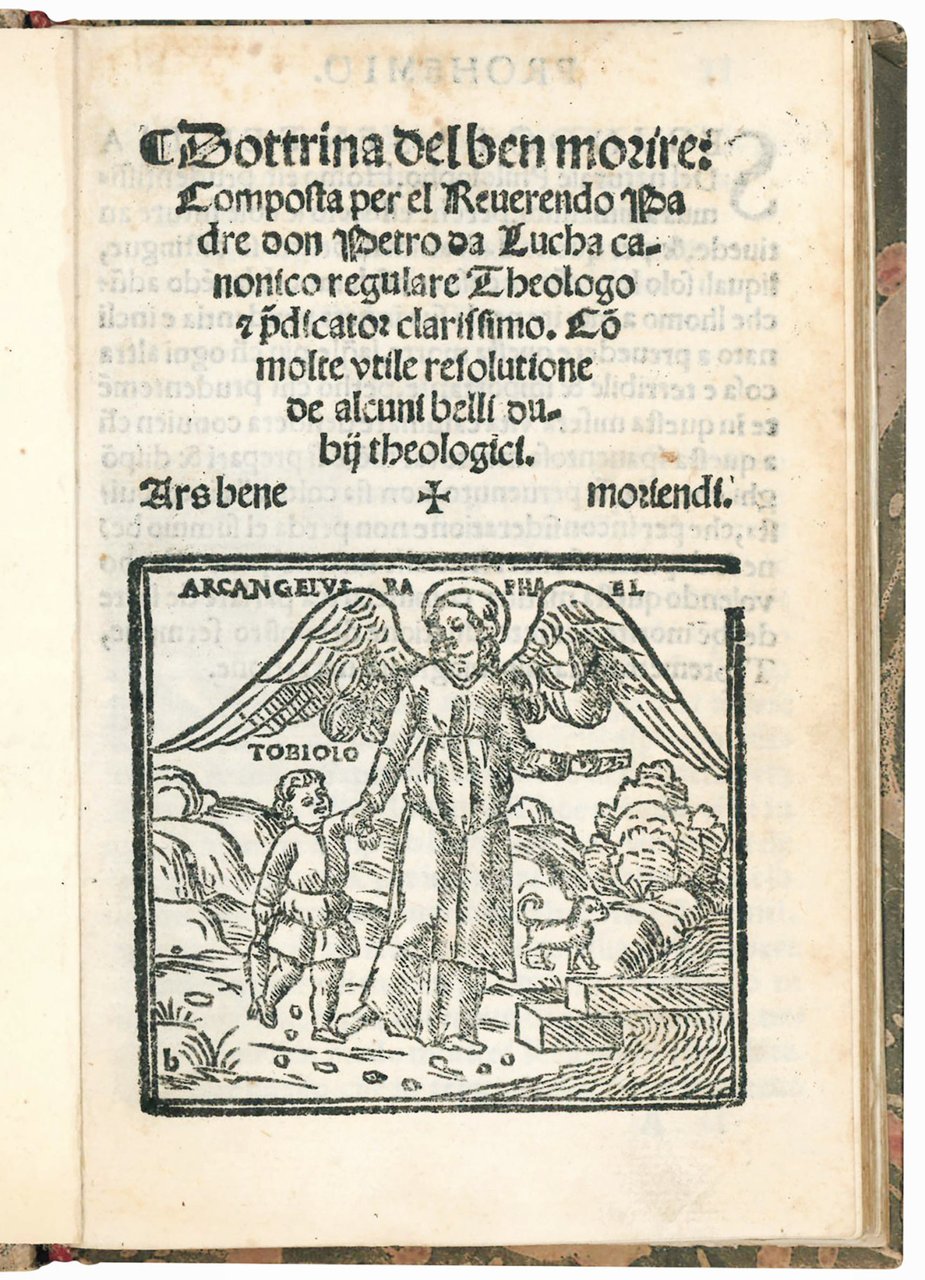
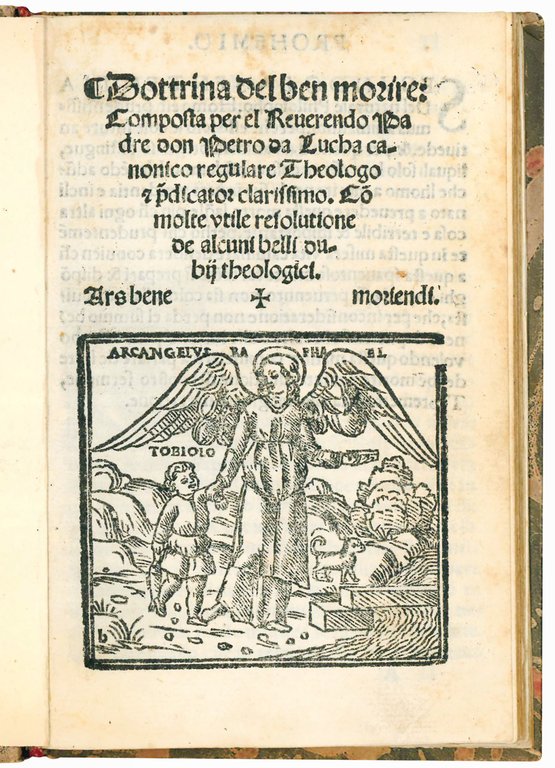
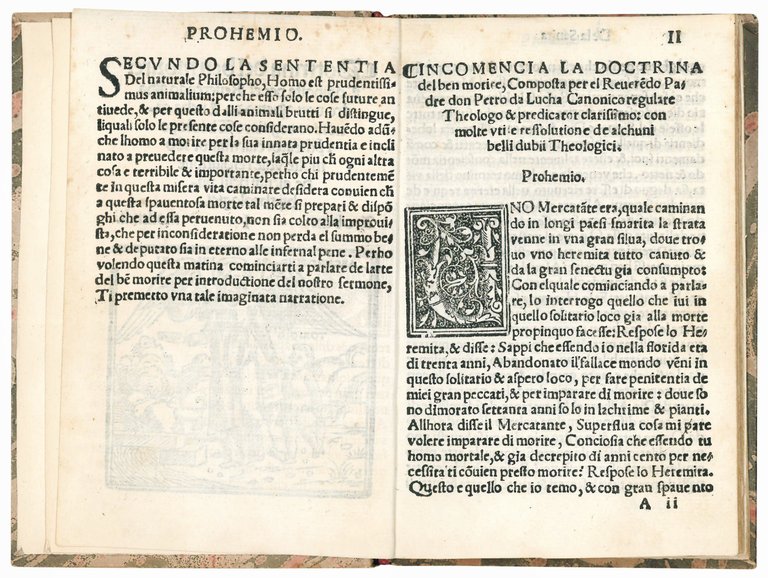
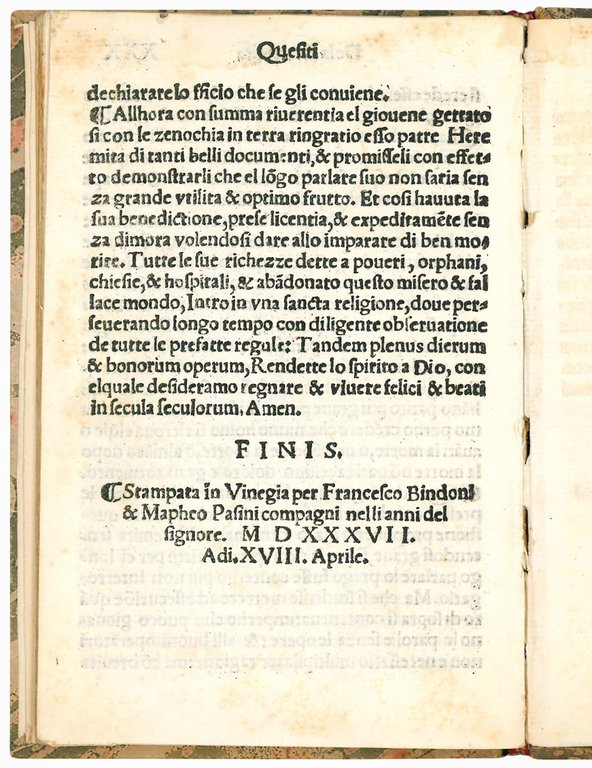
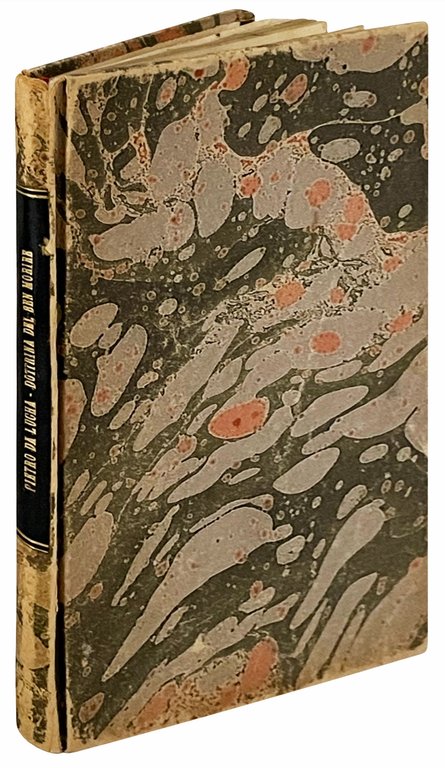

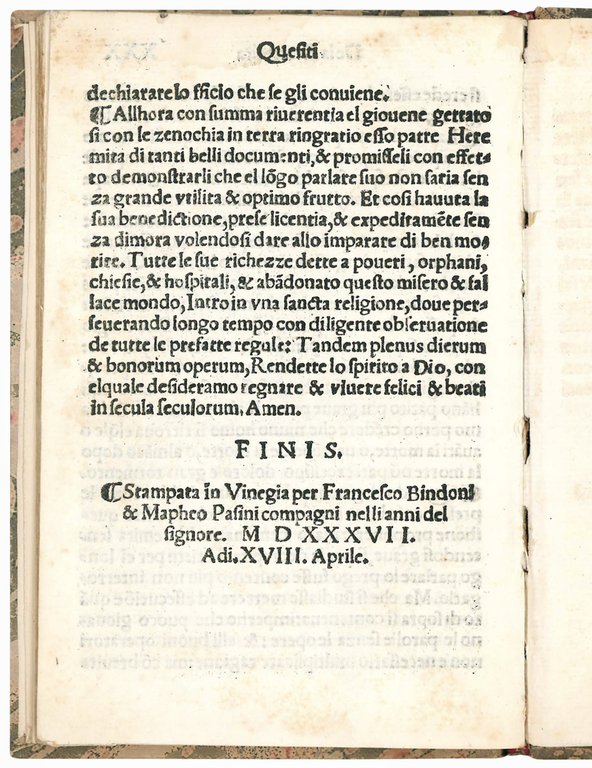
Livres anciens et modernes
PIETRO DA LUCCA (Pietro Ritta, d. 1523)
Dottrina del ben morire: Composta per il Reverendo Padre don Petro da Lucha canonico regulare Theologo, et p[re]dicator clarissimo. Con molte utile resolutione di alcuni belli dubii theologici. Ars bene moriendi. Colophon: Stampata in Vinegia per Francesco Bindoni & Mapheo Pasini compagni nelli anni del signore MDXXXVII. Adi. XVIII Aprile
Francesco Bindoni & Maffeo Pasini, 1537 (18 April)
2800,00 €
Govi Libreria Antiquaria
(Modena, Italie)
Les frais d'expédition corrects sont calculés une fois que l'adresse de livraison a été indiquée lors de la création de la commande. Un ou plusieurs modes de livraison sont disponibles à la discrétion du vendeur : standard, express, economy, in store pick-up.
Conditions d'expédition de la Librairie:
Pour les articles dont le prix est supérieur à 300 euros, il est possible de demander un plan de paiement échelonné à Maremagnum. Le paiement peut être effectué avec Carta del Docente, Carta della cultura giovani e del merito, Public Administration.
Les délais de livraison sont estimés en fonction du temps d'expédition de la librairie et de la livraison par le transporteur. En cas de retenue douanière, des retards de livraison peuvent survenir. Les frais de douane éventuels sont à la charge du destinataire.
Pour plus d'informationsMode de Paiement
- PayPal
- Carte bancaire
- Virement bancaire
-
-
Découvrez comment utiliser
votre Carta del Docente -
Découvrez comment utiliser
votre Carta della cultura giovani e del merito
Détails
Description
8vo (149x97 mm). XXX, [1] leaves. Collation: A-D8. Leaf D7 is a blank. Lacking the final blank leaf D8. Large woodcut vignette on the title page showing the Archangel Raphael and Tobias. Large woodcut initials on black ground. Modern marbled cardboards, lettering piece along the spine. Loss of paper to the upper outer corner of l. B1 not affecting the text, some foxing, but a good copy.
Rare fourth edition of this extremely successful ars moriendi, that was first printed in Venice by Simone da Lovere in 1515. Translated also into French and English, it was reprinted many times during the 16th century: Venice, Comino da Lovere, 1524 and 1529; Venice, Bindoni & Pasini 1538; Brescia, Damiano Turli, 1539; Venice, Niccolò Zoppino, 1540; Venice, Vittore Ravani, 1540; Rome, Antonio Blado, 1576; Venice, Altobello Salicato, 1578, Venice, Domenico Imberti 1585. The work is based on sermons delivered by Pietro da Lucca during his time in Venice.
Works concerning the art of facing death and preparing spiritually for it were variously titled artes or doctrinae. The term ars generally refers to a technique that the reader must learn: after memorising and internalising the model described in the text in all its details (gestures, actions and words), it must be practised constantly and intensely. By doctrina, on the other hand, are meant works that illustrate and teach an approach to death with a more moral and theoretical dimension. Significantly, both terms appear in the title of Peter of Lucca's treatise. This reveals a dual structure in the book consisting of a practical, exhortative level indicating how to prepare for death and a theoretical level clarifying theological and moral aspects.
The choice of illustrations was no less important for transmitting the message of the arts of well dying. The selection of images to accompany the written text was hardly ever random. At the heart of Pietro da Lucca's Doctrina is a dialogue between a merchant and a hermit, set not in a city, but in a wooded area. The frontispiece of the first edition, from 1515, contains a woodcut depicting the moment the two protagonists meet: the merchant is depicted as a well-dressed, armed young man, while the hermit emerges from a cave with a skull beside it. The frontispieces of later imprints are completely different. In the 1524 and 1529 editions, issued by Comino da Lovere in Venice, is Death triumphant on horseback that dominates the scene; armed with a scythe, it sweeps various figures along the way, among which a cardinal, a pontiff, a bishop and a sovereign can be distinguished. The present 1537 edition features the Archangel Raphael with Tobias. The triumph of Christ on the throne is depicted on the title page of Turli 1539 edition from Brescia. Finally, the 1540 edition attributed to Zoppino, features another iconographic theme: the struggle between heavenly and infernal forces at a dying man's bedside.
Peter of Lucca's work revolves around a dialogue between a merchant and a hermit. In it, the hermit exhorts the merchant to abandon worldly life and interests, which are sources of sin. Instead, the merchant should devote himself to learning how to die well, an art that is superior to anything else and would guarantee remission of sins and the salvation of the soul. Convinced by the hermit's arguments, the merchant decides to become his disciple, and the hermit is happy to pass on this divine wisdom to him. The hermit articulates the art of dying well in three chapters, each consisting of four rules. These represent the three conditions of human life: health, illness, and agony. At the end of the hermit's sermon, the merchant promises to put the teachings he has received into practice and asks the hermit to clarify some of his doubts, which the hermit gladly agrees to do, provided they are not futile or useless; in particular, the merchant asks questions about possible tempting or beneficent apparitions that may appear at the bedside

